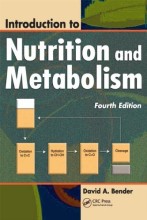Energy nutrition - the metabolism of carbohydrates and fats - Energy-yielding metabolism
4 important questions on Energy nutrition - the metabolism of carbohydrates and fats - Energy-yielding metabolism
NAD+ cannot pass the inner membrane of mitochondria, and therefore the NADH produced by glycolysis cannot enter the mitochondria for reoxidation. Therefore substrate shuttles are used. Name them.
- Glycerophosphate shuttle > important in muscles.
How many ATP costs the conversion of lactate to glucose and where is this done?
From which sources does acetylCoA arises?
- B-oxidation of fatty acids
- Ketone bodies
- Alcohol
- Amino acids that give rise to acetylCoA or acetoacetate
- Higher grades + faster learning
- Never study anything twice
- 100% sure, 100% understanding
What are the intermediates of the citric acid cycle alfa-ketoglutarate, oxaloacetate and citrate used for?
- oxaloacetate is also the precursor for glucose synthesis in the fasting state (gluconeogenesis)
- Citrate is the source of AcetylCoA for fatty acid synthesis in the cytosol in the fed state.
The question on the page originate from the summary of the following study material:
- A unique study and practice tool
- Never study anything twice again
- Get the grades you hope for
- 100% sure, 100% understanding
































